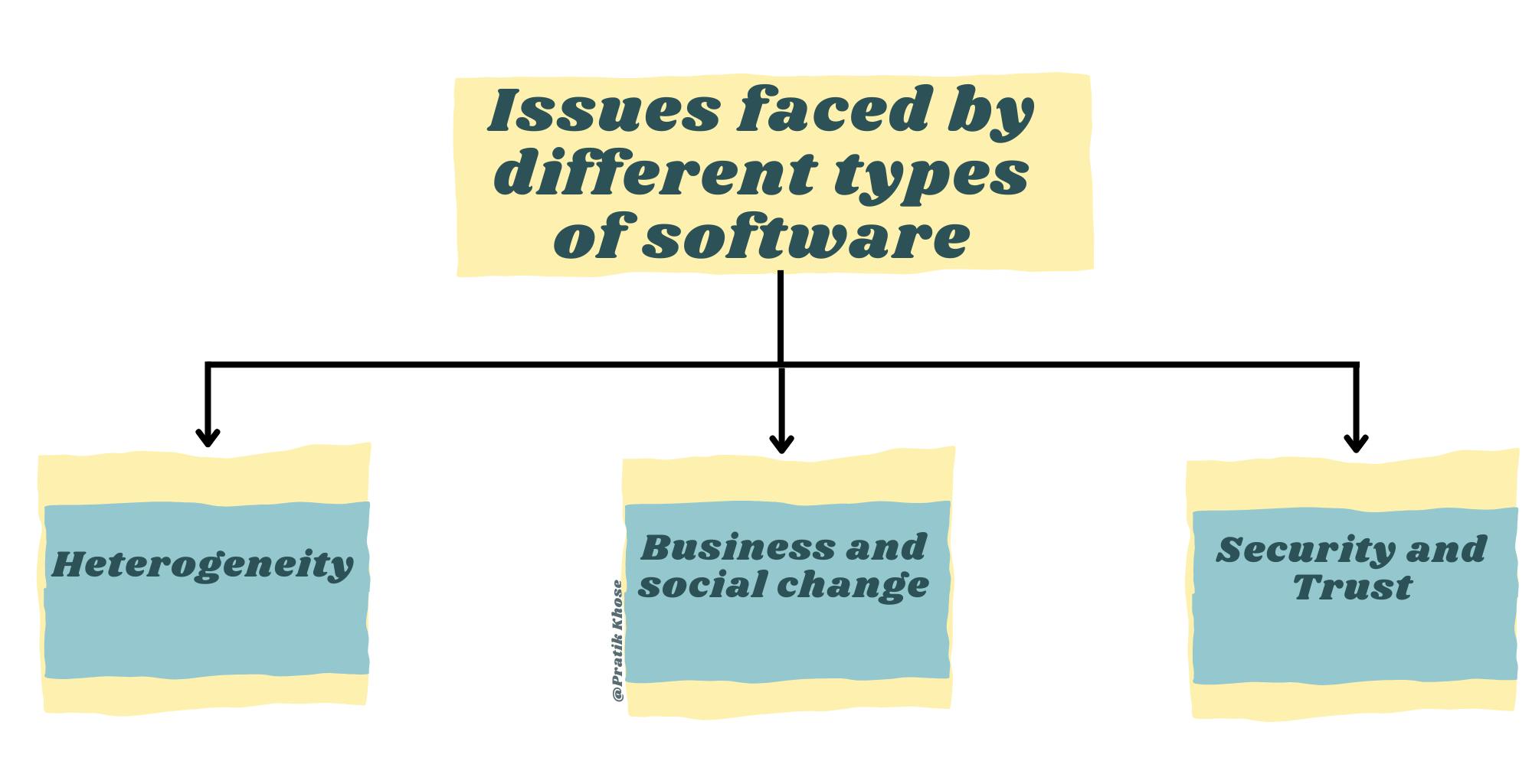There is no universal software engineering method or technique that is acceptable for all these software development processes. However, three general issues affect many different types of software.

These issues are:-
Heterogeneity
Business and social change
Security and Trust
Now let us understand each of them in detail:-
Heterogeneity:- Increasingly systems are required to operate as distributed systems across networks that include different types of computer and mobile devices. As well as running on general-purpose systems computer software may also have to execute on mobile phones.
Developers often have to integrate new software with older legacy systems, written in different programming languages like JAVA or Python. The challenge here is to develop a technique for building dependable software that is flexible enough to cope with the heterogeneity.
Example- Imagine a cloud-based application needed to interact with both traditional desktop computers and modern devices. Bridging the gap between this diversion platform requires a flexible and robust software architecture.
Business and social change:- this changes quickly as emerging economies develop and new technologies become available. They need to be able to change and evolve their existing software and so rapidly develop new software by reducing the delivery time. Many traditional software engineering techniques are time-consuming and delivery of new systems often takes longer than planned.
For example- an e-commerce platform needs to swiftly add up to changing customer behaviour and emerging technologies to remain competitive agile Development Methodologies enable quick adjustment and feature rollouts.
Security and trust:- It is essential that we can trust the software. This is especially true for remote software system access through a web page or web services infrastructure. We have to make sure that miscellaneous data or files or users cannot attack our software and that information security is maintained.
For example- with the increasing reliance on online banking security is major and crucial to protecting insensitive financial information. Software must be fortified against pushing attempts, malware and other cyber threats.
Conclusion:-
In the dynamic landscape of software development, addressing the challenges of heterogeneity, business and social change, and security and trust is essential. Developers and engineers must embrace adaptable methodologies, innovative techniques, and robust security measures to ensure that software not only survives but thrives in the ever-evolving digital era. These challenges, though formidable, serve as catalysts for innovation and continuous improvement, shaping the future of software engineering.

